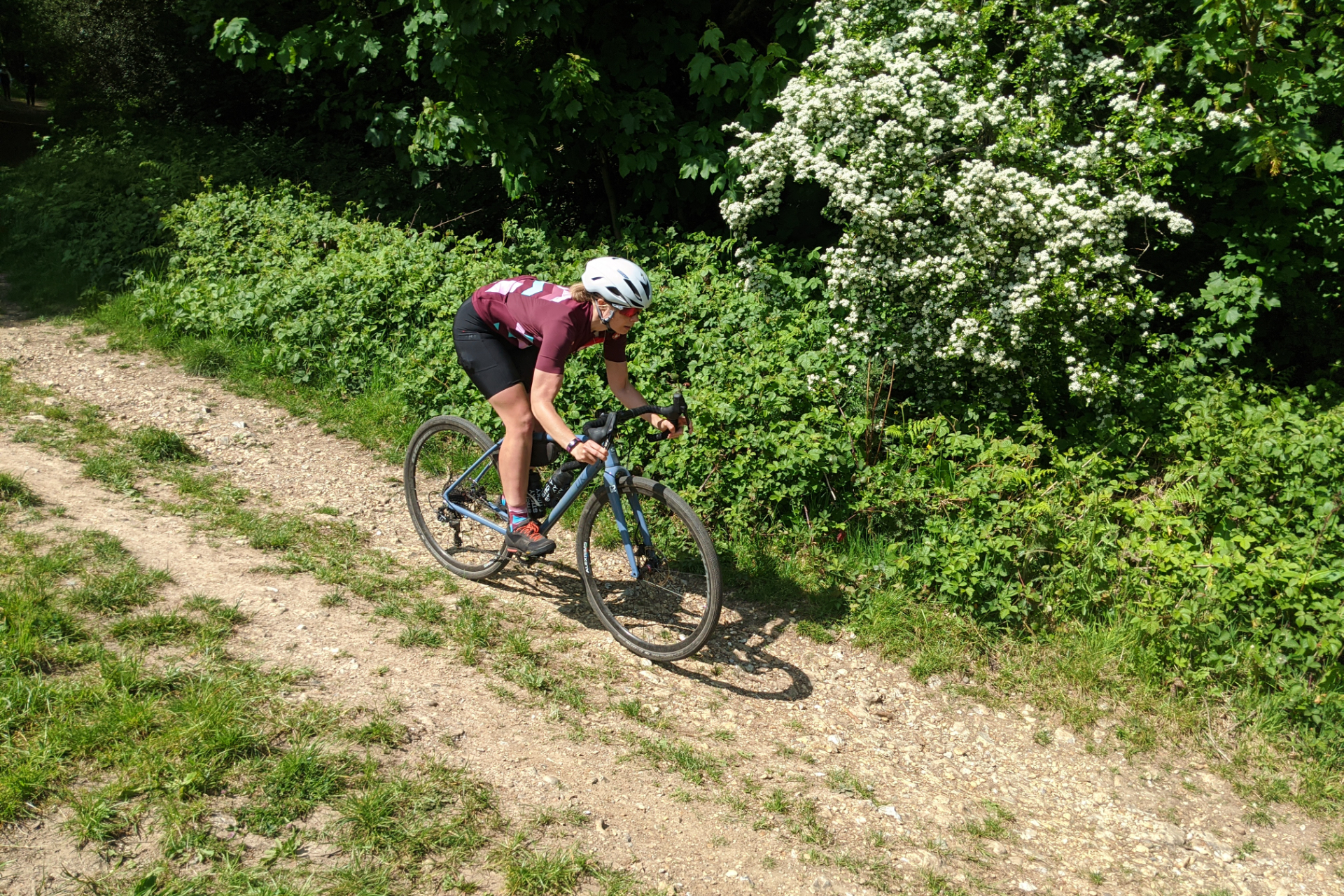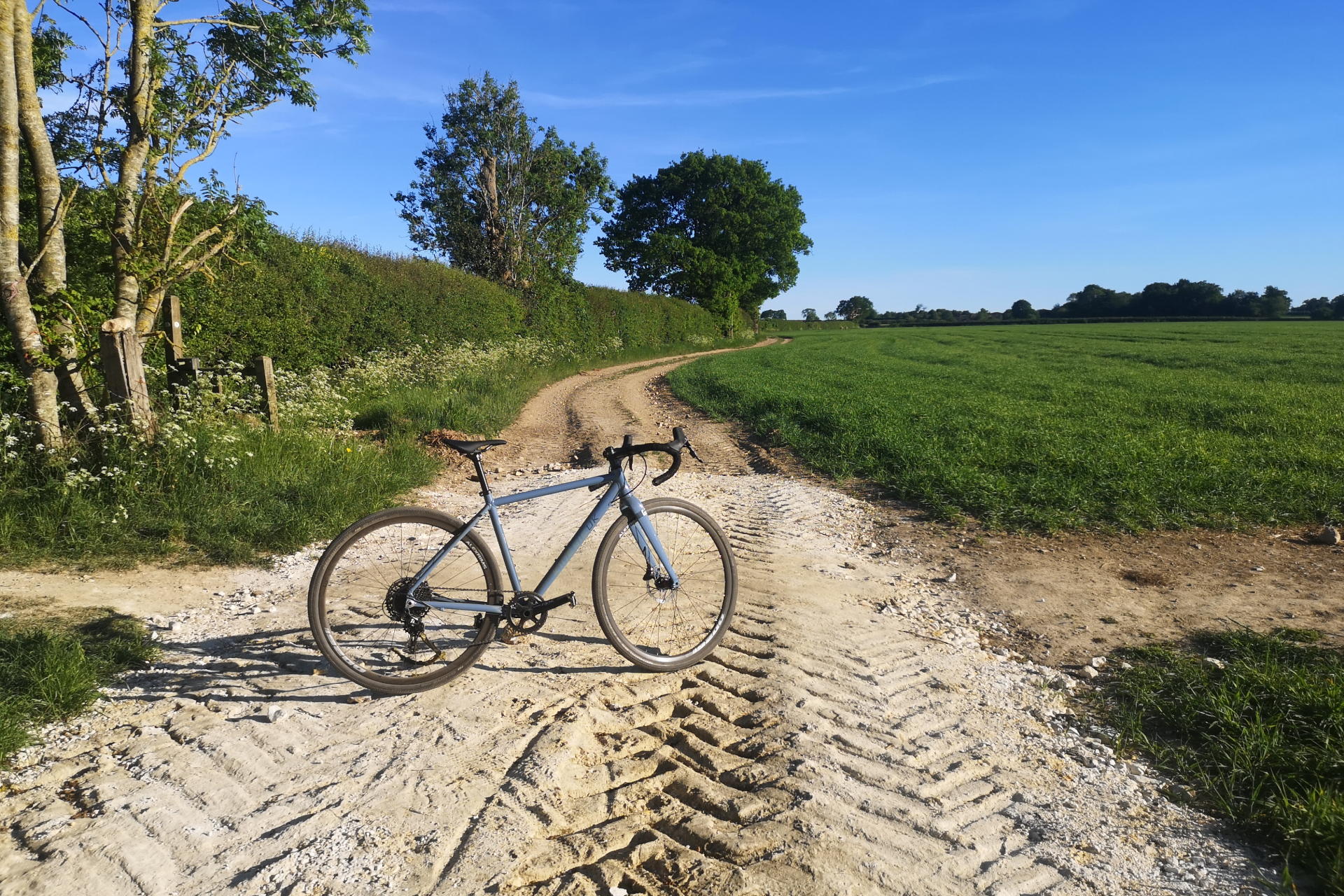Why are road cyclists riding gravel bikes when hardtails could be faster?
Of course, which bike is faster depends upon the make-up of the trails ridden, and the skill of the rider. How do we explain situations where we choose to use them over a more suited bike?


I remember writing about the 'brand new adventure bike' genre. It must have been some time around 2014. The response was largely negative: 'but this is just a cyclocross bike!', 'the industry is just trying to sell us more bikes!' (well, yes) and 'I've been adventuring for 30 years on 23c tyres,' (congrats on your excellent handling skills).
Not long after I took a spin on Evans Cycles' Pinnacle Arkose adventure bike, following its transition from a cyclocross beast. I remember noticing some nuances in handling and discussing fork offset, trail and head angles with bike designer James Olsen (formerly of Genesis bikes such as the Croix De Fer). It was before my bike reviewing days but I still maintain it's better to notice the change, and then work out how it came about, than let the process unfold the other way round. That way you know without a doubt what you're feeling is not a jaded affirmation of a cleverly constructed piece of product copywriting. My point is that the two breeds of Pinnacle were different, albeit the tailoring subtle.
Fast forward to 2020 and - whilst there is still a strong 'my road bike does that' movement (made stronger by increasing tyre allowances) - gravel and adventure bikes are the fastest selling category for many brands.
In data released alongside a new website platform, retailer Sigma Sports said sales of gravel bikes were up 77 per cent year on year, and Shimano's GRX groupsets are widely known to be the Japanese giant's star performer - with SRAM following suit last week.
I've tested assorted gravel, adventure, cyclocross and 'all-terrain' road bikes in the years that have passed, but it's only more recently that I've really let the 'gravel movement' hook its teeth deep into my personal riding routine.
A combination of factors: lockdown creating more time for exploration, the slow dissipation of hope that there will ever be a 2020 road race season, a desire to spend time with my once road racing husband who has since crossed over to the trail side. All of these reasons and more explain my gradual infiltration of the 'gravel' world and the hours spent on the Kinesis G2 test bike which arrived with me a few weeks back.
Part of the reason it took me so long to truly embrace 'gravel' was that I didn't believe there was much gravel around me. In some respects, I just wasn't looking hard enough.

And in other respects, I was right.
Head out to the trails around my Surrey home and a lot of them are littered with what feel like toweringly high roots, lumps of white stone conspiring to create rock gardens far more unstable than those I found on my one-off visit to Morzine's downhill runs, and random bombholes lying in wait to send me over the bars (ridden, of course, with extreme care in the present climate).
The terrain on any given route will vary for each and every rider.
Gravel riding really exploded in the US, where riders (I'm told) have miles and miles of unpaved, gravel littered roads at their disposal. Exploring my own stomping ground, the make-up often feels to be 10 per cent road (to get to the trails), 30 per cent 'ideal gravel conditions' and 60 per cent 'honestly mate, a hardtail mountain bike would do this job better' - as repeatedly demonstrated by my other-half on his aeons old Stumpjumper (from the days when the Stumpy had no rear suspension).

Therefore, 60 per cent of the time, I'm inhibiting my already not particularly impressive trail skills with a bike not actually tailored to the job in hand. As a habitual roadie with limited tekkers, I would be faster on a hardtail 60 per cent of the time.
Perhaps that realisation is why the 'gravel bike' genre is borrowing more and more from the muddier side of the bike industry. The Evil Chamois Hagar has to be the pinnacle of examples: a gravel bike with a "66.67-degree headtube angle, 50mm stem, and a dropper post." At what point, you have to ask, does a gravel bike morph into a rigid hardtail with dropped handlebars?
And if the dropped bars are too 'road going', then there's the likes of the new Specialized Diverge Evo which does away with the curly bits altogether. All of this movement takes this genre closer and closer to something that looks like an old school meets modern take on current and 20 year old mountain bike trends, and yet, we keep going back for more and these bikes are rolling out of the doors quicker than many retailers can re-stock.
Why?
Perhaps for the same reason it took a global pandemic snatching away the 2020 race season I'd worked all winter for to inspire me to really get involved. Motivations for cycling are varied, but somewhere buried amongst most cyclists 'reasons to ride' list is an enjoyment of the simple pleasures of childhood.
A gravel bike is, in part, a 'do it all' bike. It'll ride alright on the road, alright on the trails (even better in the right hands) and of course pretty damn well on that small minority of unpaved gravel expanse. Where it doesn't excel on the road, it takes away the self-imposed pressures of Strava QOM hunting (though Strava has done that quite nicely itself now, too) and average speed chasing. Where it doesn't excel on the trails, it makes fairly benign playgrounds infinitely more challenging. Why travel with a boingy bike when you can step outside and ride a rigid one to the same effect?
Gravel bikes are experts at allowing us to stitch together multiple terrain types in one ride. And of course, which bike is faster depends upon the make-up of the trails ridden, and the skill of the rider. How do we explain situations where we choose to use them over a more suited bike? Tackling an imperfect landscape with an imperfect machine gives us every excuse possible to strip away the seriousness that all too often takes over cycling, replacing it with a playground mentality and the opportunity to just have fun. Which, unless you're getting paid to race, is why most of us ride anyway.

Thank you for reading 20 articles this month* Join now for unlimited access
Enjoy your first month for just £1 / $1 / €1
*Read 5 free articles per month without a subscription

Join now for unlimited access
Try first month for just £1 / $1 / €1
Get The Leadout Newsletter
The latest race content, interviews, features, reviews and expert buying guides, direct to your inbox!
Michelle Arthurs-Brennan the Editor of Cycling Weekly website. An NCTJ qualified traditional journalist by trade, Michelle began her career working for local newspapers. She's worked within the cycling industry since 2012, and joined the Cycling Weekly team in 2017, having previously been Editor at Total Women's Cycling. Prior to welcoming her first daughter in 2022, Michelle raced on the road, track, and in time trials, and still rides as much as she can - albeit a fair proportion indoors, for now.
Michelle is on maternity leave from April 2025 until spring 2026.
-
 'I'll take a top 10, that's alright in the end' - Fred Wright finishes best of British at Paris-Roubaix
'I'll take a top 10, that's alright in the end' - Fred Wright finishes best of British at Paris-RoubaixBahrain-Victorious rider came back from a mechanical on the Arenberg to place ninth
By Adam Becket Published
-
 'This is the furthest ride I've actually ever done' - Matthew Brennan lights up Paris-Roubaix at 19 years old
'This is the furthest ride I've actually ever done' - Matthew Brennan lights up Paris-Roubaix at 19 years oldThe day's youngest rider reflects on 'killer' Monument debut
By Tom Davidson Published